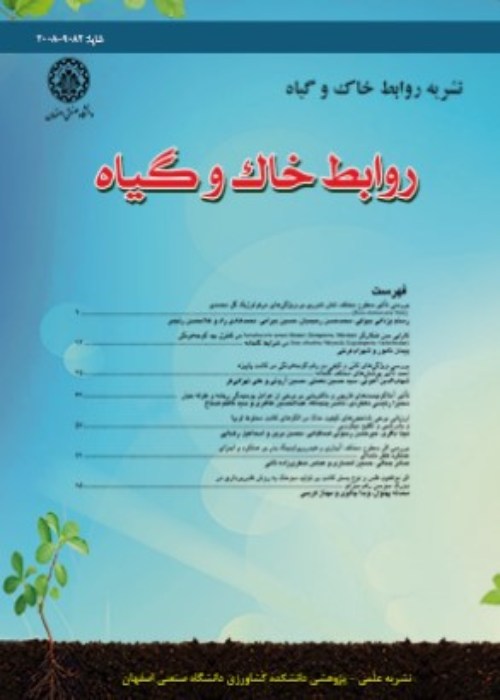Effects of foliar application of humic acid and drought stress on growth and physiological characteristics of marigold (Taget erecta)
Author(s):
Article Type:
Research/Original Article (دارای رتبه معتبر)
Abstract:
Plants are faced with various environmental stresses during their growing period. Each of these stresses have different effects on growth, metabolism and yield according to the sensitivity level and stage of the plant growth. One way of reducing the negative effects of the stresses is to use humic substances. The present study was carried out to evaluate the effects of humic acid and drought stress on morphological and physiological indices of marigold. The experiment was carried out according to the factorial arrangement, based on completely randomized design with three replications, in Department of Horticultural Science, Arak University, in fall and winter of 2016. The effects of four humic acid levels (0, 50, 100 and 250 mg/L) and three irrigation intervals (5, 10 and 15 days) was investigated on physiological and morphological traits of the marigold (root length, number of leaves and flowers, chlorophyll a, chlorophyll b, total chlorophyll, carotenoids, phosphorus, calcium and proline contents). Results showed that root length and proline content was increased by increasing intensity of drought stress. The highest proline content was obtained by 15-day irrigation interval without humic acid and the lowest content was obtained by 5-day irrigation interval with 250 mg/L humic acid. However, drought stress reduced number of leaves and flowers, chlorophyll (a, b and total), carotenoid, and phosphorus and calcium contents. Higher levels of humic acid, particularly 250 mg/L, increased the amount of chlorophyll a, chlorophyll b, total chlorophyll, carotenoids, phosphorus content, root length, number of leaves in the sixth week and number of flowers; but reduced the calcium and proline contents. The 250 mg/L humic acid treatment not only reduced the negative effect of drought stress, but also was able to improve the physiological and morphological characteristics. In conclusion, using humic acid, especially at higher concentrations, is recommended for increasing the irrigation interval of marigold flower.
Keywords:
Language:
Persian
Published:
Journal of Soil and Plant Interactions, Volume:9 Issue: 34, 2018
Pages:
67 to 80
magiran.com/p1884001
دانلود و مطالعه متن این مقاله با یکی از روشهای زیر امکان پذیر است:
اشتراک شخصی
با عضویت و پرداخت آنلاین حق اشتراک یکساله به مبلغ 1,390,000ريال میتوانید 70 عنوان مطلب دانلود کنید!
اشتراک سازمانی
به کتابخانه دانشگاه یا محل کار خود پیشنهاد کنید تا اشتراک سازمانی این پایگاه را برای دسترسی نامحدود همه کاربران به متن مطالب تهیه نمایند!
توجه!
- حق عضویت دریافتی صرف حمایت از نشریات عضو و نگهداری، تکمیل و توسعه مگیران میشود.
- پرداخت حق اشتراک و دانلود مقالات اجازه بازنشر آن در سایر رسانههای چاپی و دیجیتال را به کاربر نمیدهد.
دسترسی سراسری کاربران دانشگاه پیام نور!
اعضای هیئت علمی و دانشجویان دانشگاه پیام نور در سراسر کشور، در صورت ثبت نام با ایمیل دانشگاهی، تا پایان فروردین ماه 1403 به مقالات سایت دسترسی خواهند داشت!
In order to view content subscription is required
Personal subscription
Subscribe magiran.com for 70 € euros via PayPal and download 70 articles during a year.
Organization subscription
Please contact us to subscribe your university or library for unlimited access!



